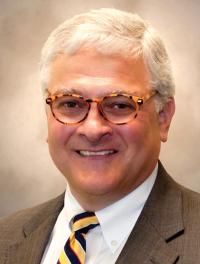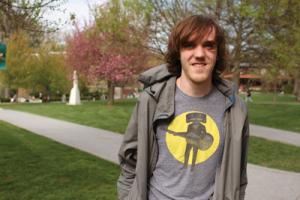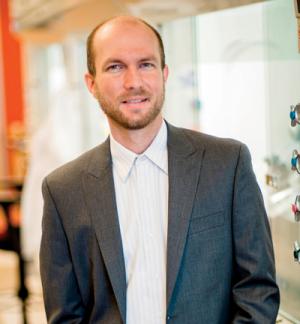Sigma Pi Sigma Members Make Headlines
Spring
2015
In the News
Sigma Pi Sigma Members Make Headlines
From the University of Missouri News Bureau:
 For his distinguished contributions to the synthetic and physical chemistry of nanoscale carbons and nanoporous membranes and for outstanding service in university administration, Henry C. “Hank” Foley, Sigma Pi Sigma ‘76, has been named a Fellow of the American Association for the Advancement of Science (AAAS).
For his distinguished contributions to the synthetic and physical chemistry of nanoscale carbons and nanoporous membranes and for outstanding service in university administration, Henry C. “Hank” Foley, Sigma Pi Sigma ‘76, has been named a Fellow of the American Association for the Advancement of Science (AAAS).
Foley, senior vice chancellor in the Office of Research at the University of Missouri, has worked for more than 30 years to advance the study of nanotechnology. He is an inventor with 16 patents that include a plasma reactor that aids in transforming industrial materials into finished products, carbon membranes for small or large molecule separations and new kinds of carbon materials. He has authored more than 120 peer-reviewed articles on topics such as adsorption, a process that is useful in energy storage including hydrogen and natural gas, and nanoporous carbon.
“Our research is important because we were among the first to really tackle nanoporous carbon usefulness and utility,” Foley said. “We knew the importance of this technology early … I’m delighted to see how much the field has grown. A need for deep science still exists as well as tremendous opportunities in developing more efficient energy storage and carbon dioxide abatement. Our nanoporous carbon research will be important in global efforts to decrease carbon emissions and create a healthier environment.”
From Loyola University Maryland News:
 Kevin Seltzer, Loyola University Maryland graduate and Sigma Pi Sigma ‘13, won the American Physical Society’s LeRoy Apker Award, a $5,000 undergraduate physics achievement award to recognize outstanding physics research. The award was presented at the American Physical Society April Meeting in 2015. In addition to Seltzer’s monetary reward, Loyola’s physics department will also receive $5,000 to support undergraduate physics research.
Kevin Seltzer, Loyola University Maryland graduate and Sigma Pi Sigma ‘13, won the American Physical Society’s LeRoy Apker Award, a $5,000 undergraduate physics achievement award to recognize outstanding physics research. The award was presented at the American Physical Society April Meeting in 2015. In addition to Seltzer’s monetary reward, Loyola’s physics department will also receive $5,000 to support undergraduate physics research.
Seltzer, a physics and mathematics double major, was awarded for his work on the Casimir effect as a Hauber Fellow in the summers of 2011 and 2012. The Casimir effect is an attractive force experienced by two uncharged metal plates when they are placed extremely close together. Casimir effect research is critical to ensuring that components of nanotechnology are structurally sound.
“The award is very competitive and the other finalists were all doing great research. I was honestly shocked when I found out that I won — it was anyone’s game, so to speak,” said Seltzer.
From the University of Texas at Dallas News Center:
 Jason Slinker (Sigma Pi Sigma ‘00), an assistant professor of physics at UT Dallas, has earned a 2014 Regents’ Outstanding Teaching Award from the University of Texas System Board of Regents.
Jason Slinker (Sigma Pi Sigma ‘00), an assistant professor of physics at UT Dallas, has earned a 2014 Regents’ Outstanding Teaching Award from the University of Texas System Board of Regents.
Slinker credits his undergraduate and graduate advisors for inspiring his enthusiasm to work with students. His mentor, Dr. Dwight E. Neuenschwander, who chairs the physics department at Southern Nazarene University, was a coach for the U.S. team in the International Physics Olympiad, and has been involved for many years with the national Society of Physics Students organization.
“We would do physics circuses together, which is where I learned some of the demonstrations that I now do in class and our students do in the community.”
– Jason Slinker
“We would do physics circuses together, which is where I learned some of the demonstrations that I now do in class and our students do in the community,” said Slinker, who is faculty advisor for the Society of Physics Students (SPS) at UT Dallas, a group of about 20 students.
Under Slinker’s guidance, a group of SPS students won a research grant in 2012 from Sigma Pi Sigma to create testing equipment for light-emitting diodes. The chapter won another honor from the national SPS organization, the 2013 Marsh W. White Outreach Award, and used the funds to sponsor a model rocket contest for the UT Dallas community.
Slinker’s research combines biology, chemistry and physics, and includes DNA electrochemistry and the manufacturing of nanocircuits with DNA. He teaches introductory mechanics courses in physics, as well as a capstone laboratory class on physical measurements
